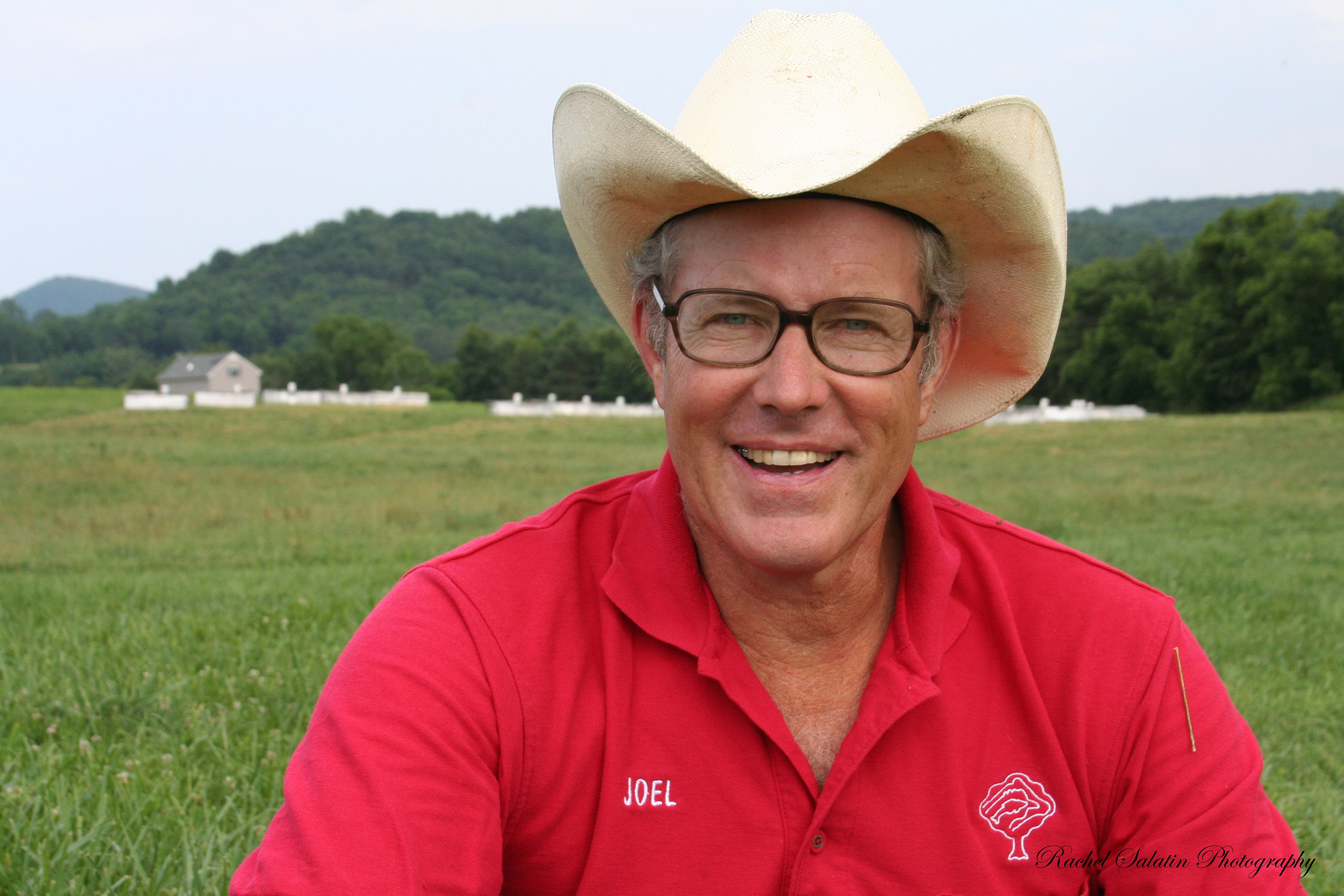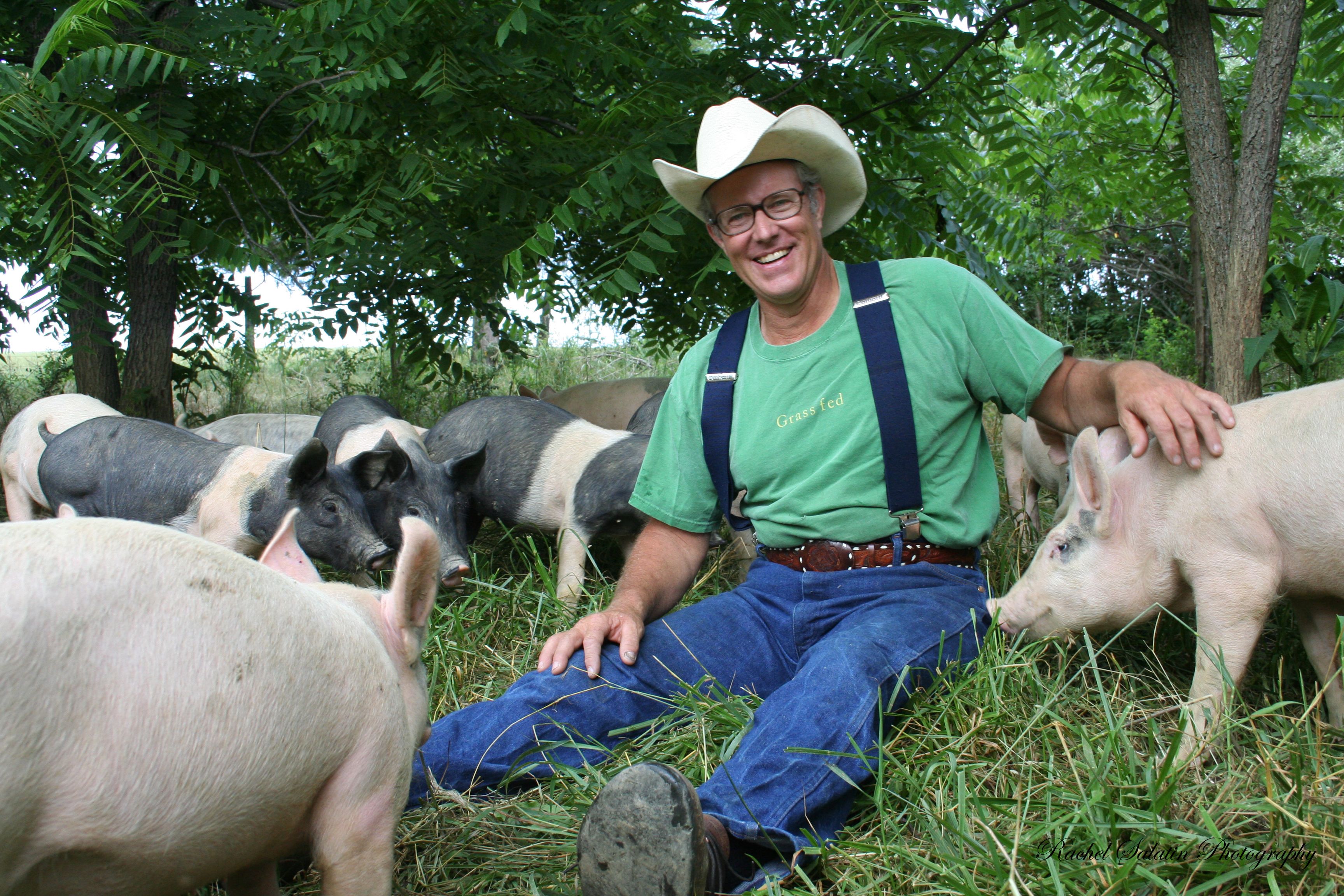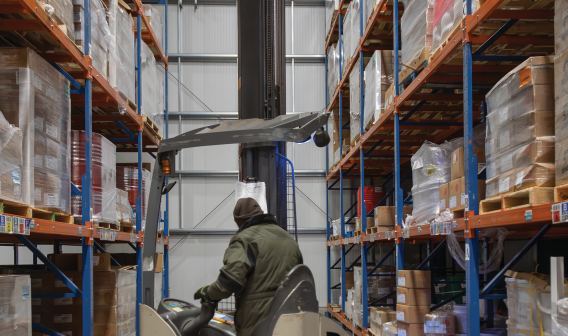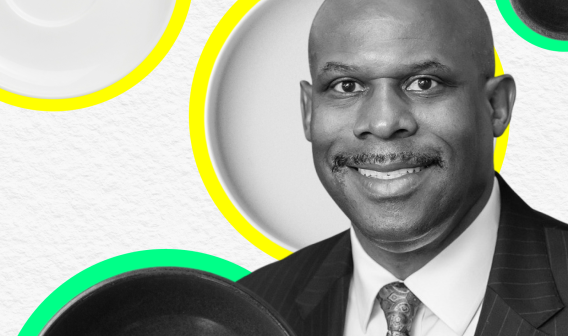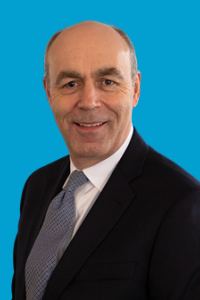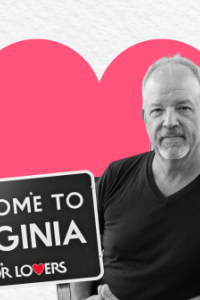Joel Salatin is the owner and operator of Polyface Farms in Augusta County, which focuses on sustainable, environmentally friendly agriculture. He has authored 11 books, including “Salad Bar Beef,” “Pastured Poultry Profit$,” and “The Sheer Ecstasy of Being a Lunatic Farmer.” He was featured prominently in Michael Pollan’s New York Times best-seller “The Omnivore’s Dilemma” and the Academy Award-winning documentary “Food, Inc.” VEDP President and CEO Stephen Moret spoke with him about how he runs a successful farm without betraying his operating principles.
Stephen Moret: Joel Salatin calls himself a Christian, libertarian, environmentalist, capitalist, lunatic farmer. Those who like him call him the most famous farmer in the world, the high priest or the pastor of the pasture, and the most eclectic thinker from Virginia since Thomas Jefferson. Can you share a little about the story of Polyface Farms?
Joel Salatin: Our family came to Virginia in 1961. My parents were from the Midwest. Dad flew in the Navy in World War II. After the war, he went to Indiana University, got a business administration degree, and then always had a dream of doing something in a developing country, so he went to Venezuela as a bilingual accountant with Texas Oil Company, and in seven years saved up enough to buy a 1,000-acre farm in the highlands of Venezuela, and we were there, going right along, until the Junta in 1959 of Perez Jimenez. We had left Texas Oil at that time. We were not diplomats, not missionaries, and were not tied with any American business. We were just ex-pats out there on the land, which made us very vulnerable to the revolutionaries in the Junta, who of course hated Americans.
That was the beginning of the ugly American capitalist pig at that time, and so basically, we fled the back doors, the machine guns came in the front door, we lost everything, spent another year trying to get protection and stay, couldn’t make anything work, so we came back here in 1961 and settled here. So we settled here in Virginia on the most gullied rockpile, a little farm, 550 acres here in the Shenandoah Valley in Augusta County near Staunton, and initially began a lot of conservation work trying to stop the erosion. We just had rocks, and so the first 10 years were primarily conservation, and Dad sought counsel.
How do we make a living on a small farm? We had numerous both public and private counselors come, and the universal advice was, “Graze the forest, borrow more money, plant corn, build silos, buy more chemicals.” And my grandfather had been a charter subscriber to Rodale’s Organic Gardening and Farming magazine in 1948, when it started, and had a large compost pile and was very non-chemical at that time and Dad kind of got that environmental bent from him, and of course I got it from my dad. And so Dad instinctively knew that we couldn’t make enough volume to make it on low margin, which is of course what commodity agriculture runs on — high volume, low margin.
We had to somehow figure out how to get a higher margin and wear all the hats of marketing, distribution, processing, so that we actually owned a brand, and so we started experimenting with all sorts of non-chemical farming methods those first 10 years. So by the time I was in high school, we had a plan. We needed to direct market, we needed to run the farm on carbon, not petroleum — or at least real-time carbon, not petroleum — and do more for ourselves. And with that background, when I came back from college, the mortgage was done. We didn’t owe any money and we were able to take this raw land, as poor as it was, and essentially build a pasture-based, multi-speciated, direct-marketed, carbon-run farm on the raw land base.
Moret: It’s a remarkable story. How did your childhood growing up in that context inform your career path and how you thought about building the business?
Salatin: Dad was in business administration, he was an accountant, and very entrepreneurial out of the box. He always said in his accounting practice, his goal was to always work himself out of a job. He wanted small businesses to do books in a way that they could understand and see their own numbers so they didn’t have to spend so much time on his professional expertise. And so that entrepreneurial spirit bled over into our family. My older brother started a rabbit enterprise when he was, I don’t know, 12 or so, and I turned 10 and I said, “Well, I want an enterprise,” and I had a great-uncle that had a chicken farm in Indiana.
So from Sears & Roebuck, the big catalog, I got 50 little chicks and began a chicken enterprise at 10 years old. By the time I got to be about 12, 13, or 14 years old, and I had these eggs and I had a garden, I had my own little business enterprise going there, and Dad, again, saw the potential of direct marketing. We found this local market that was down to two elderly matrons, and we joined the curb market, and I was the main seller and I loved it.
And so all through from eighth grade through graduation from high school, every Saturday morning of the year, I’d get up at 4 a.m. and be down there selling stuff, selling what I had gardened. We had beef, pork, chicken, eggs, produce. We milked a couple of Guernsey cows. We could sell butter, buttermilk, cottage cheese, and did that throughout my school years. And that entrepreneurial, direct-market business interface, I wouldn’t trade it for a million dollars today. And the mentoring of these two elderly matron ladies who took me under their wing — they were probably in their 70s at the time and took me under their wing as a little 14-year-old, and shepherded me into how you display your stuff, how do you talk to happy customers and to disgruntled customers — it was just invaluable, and truly informed us.
Moret: Talk a little bit about the difference between how you run Polyface Farms, and how a more conventional farm might be operated.
Salatin: There are some pretty significant differences and if you boil them down to pretty simple ideas, the first thing is animals move. We live in a culture that doesn’t believe animals need to move, we can lock them up in feed lots and factory houses, and in tiny pens and they don’t have to move. But essentially, we’re looking at nature as a template, and it should give us all pause to realize that, 500 years ago, North America actually grew more animals, more nutrition, than it does today, even with modern methodology.
And so we look to those patterns and say, “What were the templates of that abundance that greeted the Europeans when they arrived here with all the deer, the bison, the turkeys, the pheasants, the flocks of passenger pigeons that John James Audubon said in 1820 covered the sky for three days?” He couldn’t see the sun for the flock of birds that flew over. They weren’t chickens, but it was a lot of birds. If animals move, then you have to have mobile control, because the neighbors don’t want them, and we don’t have migratory things anymore.
So we’ve got to control them, we’ve got to have mobile water because they can’t always walk to the water, and we’ve got to have mobile shelter to protect them from the sun, for example, or inclement weather. And so mobility became, if animals are going to move, you need mobile infrastructure.
And sometimes I think they think we just sat down one day in a focus group and all got into a trance and said, “How can we have a different-looking farm?” And actually, all the innovation that we’ve done in infrastructure has been a natural, physical function, or manifestation of a simple idea, looking at nature as a template and saying, “Oh, animals move.” For example, even when we’re grazing the cows, we don’t just have a hundred acres with cows running around in them. We’ll take 300, 400 head and put them in two acres for one day, and we move them every day like the ancient bison being pushed by wolves and flies to mob them up, and that creates a mosaic across the landscape where there’s always something growing, something mature, something blossoming, something dropping seeds, and so this stimulates the wildlife and the pollinators because there’s always something in bloom because of the mosaic effect of moving them across the landscape in a very systematic way.
So that’s one thing. Another one is that our fertility is based on carbon, and so we do have a lot of forest, a lot of woods, and rather than a fertilizer truck coming in, we have a large industrial chipper that we then can chip diseased and crooked trees, and essentially weed the woodlot like you’d weed green beans.
And so those are just some basic things: carbon-centric, animals move, and then direct market. We’re not selling into a commodity stream. We actually have our own brand. We service 5,000 families, 50 restaurants, numerous institutions, and now we’re shipping nationally. That started last July.
